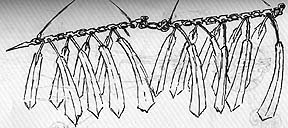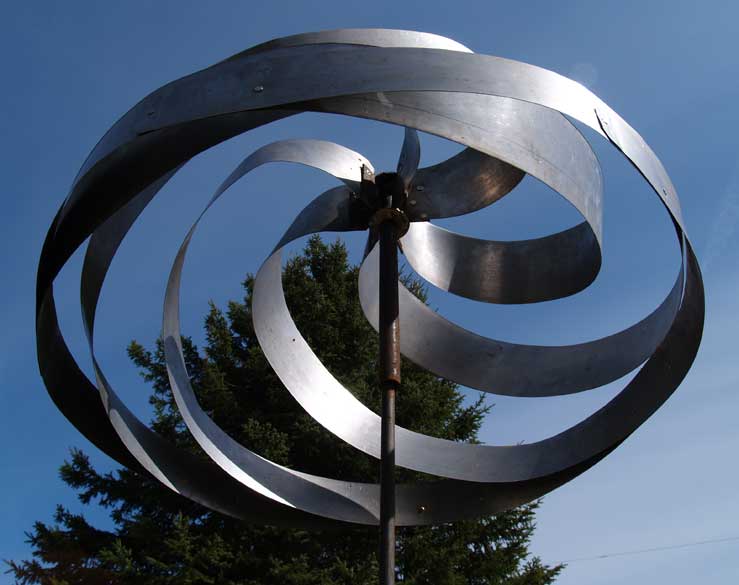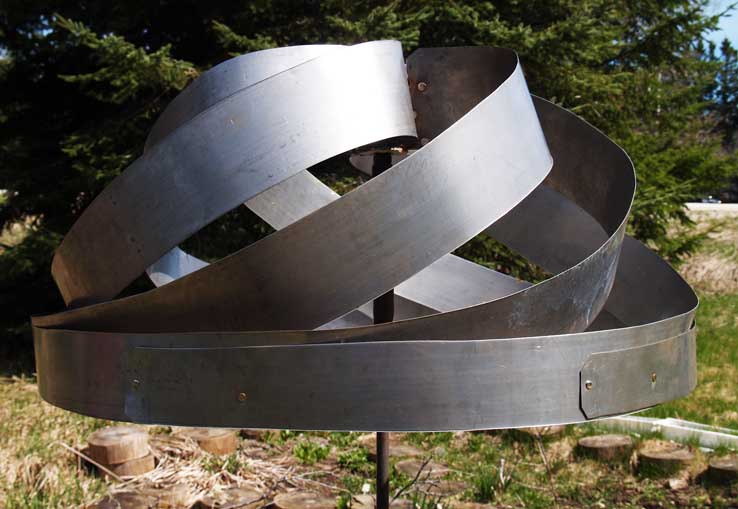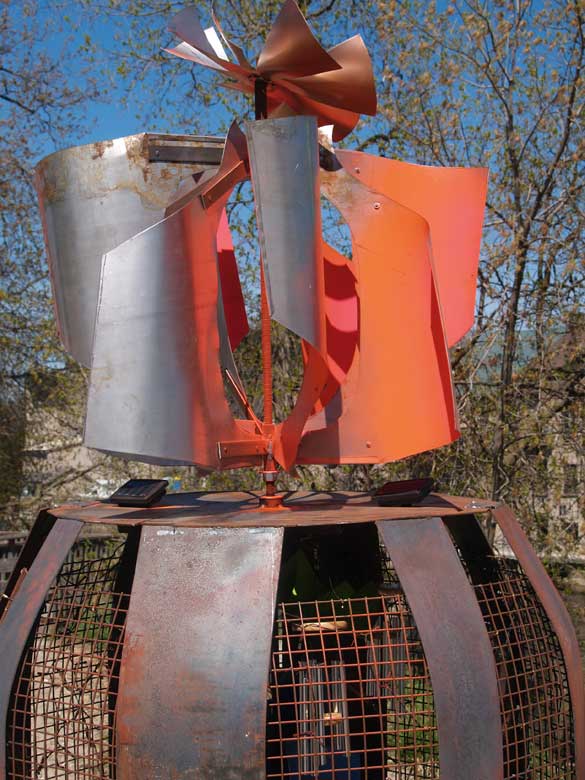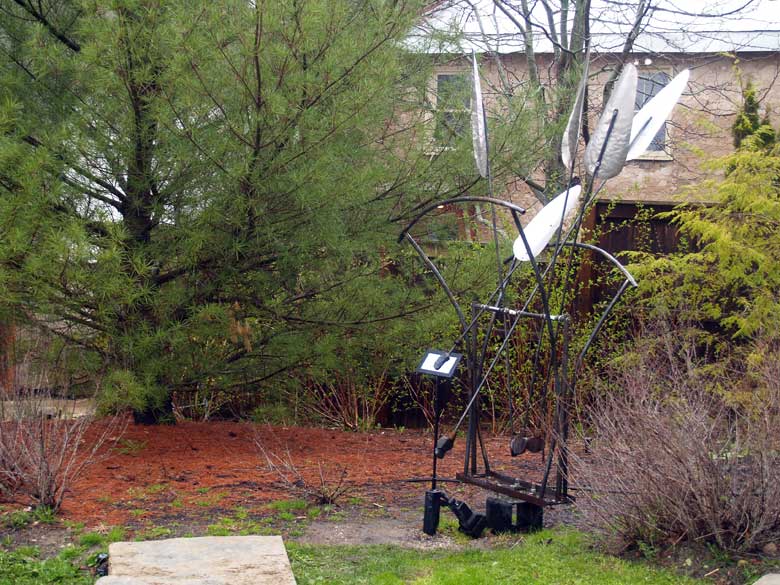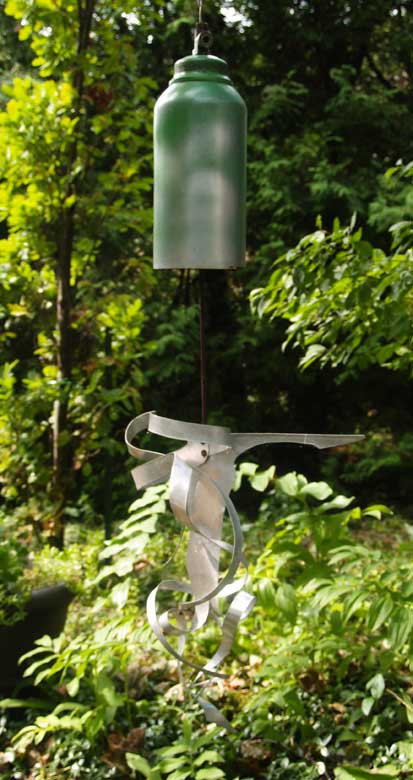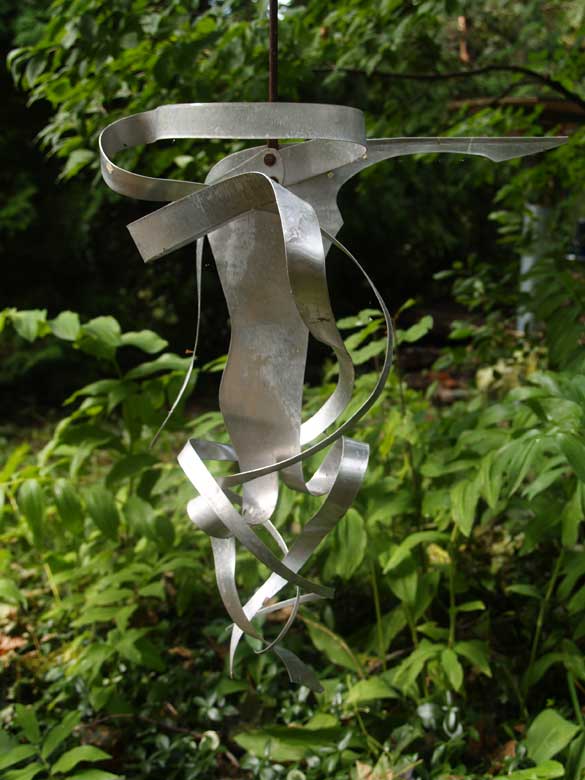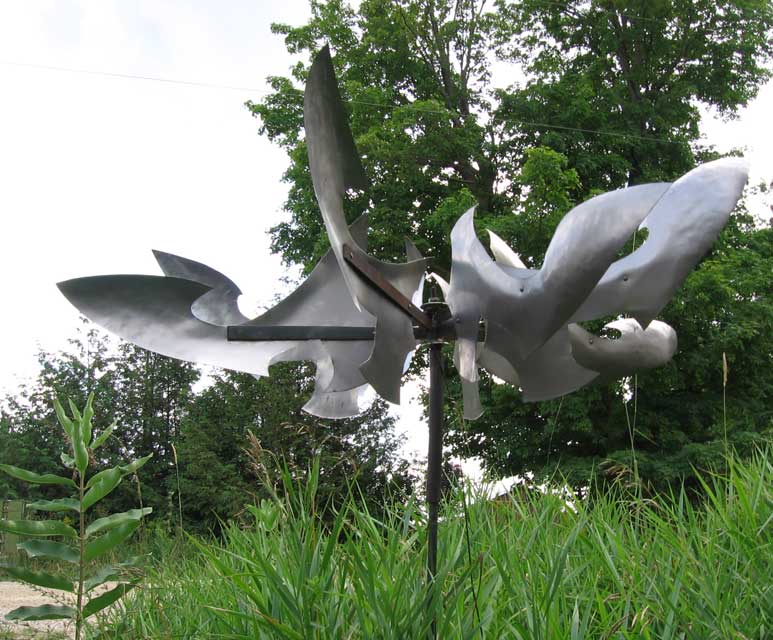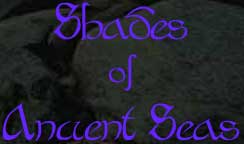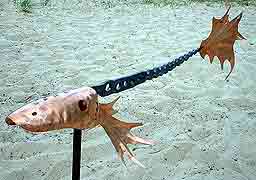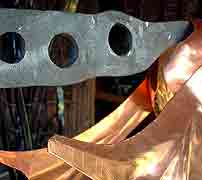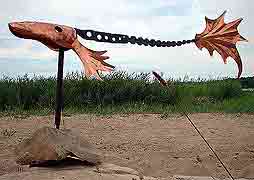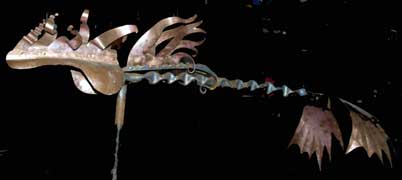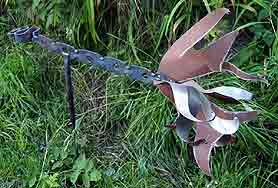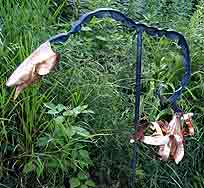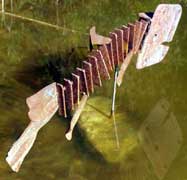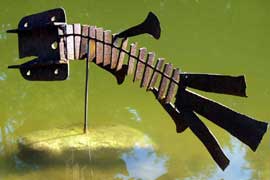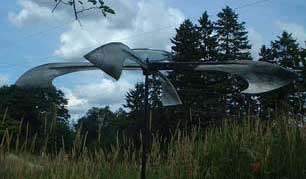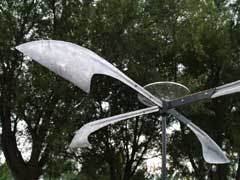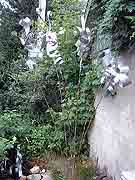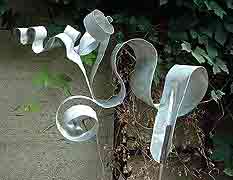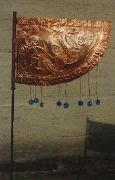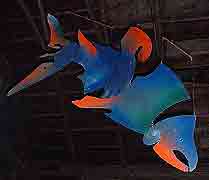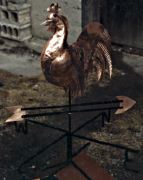"Norse Weather Board"
This early piece straddles the line between weather vanes
and windbiles. It is one of a series of four matching
pieces made in 1992. The shape is based on a number of
artifacts from the Viking Age, circa 1000 AD. Originally
these 'weather boards' would in fact be fixed to the prow
of a longship. Weighted ribbons would hang down, measuring
not only wind direction, but relative speed as well. Each
of the four I made was of similar size, formed of heavy
sheet copper. The patterns on each differed, with designs
based on the four points of the compass, this is the one
representing West. Each had a central figure: North -
eagle, South - hart, East - Loki, West - serpent. The type
was in Norse runes, with the sailor's prayer "Sun at back
and fair winds" along the top. The line along the bottom
edge related to the particular direction. In this case the
runes give brief sailing directions from Iceland to
Vinland. |
"Salmon Of Knowledge"
This was the first real windbile piece I did. It was a
'proof of concept' - more of a prototype than a finished
sculpture. The material used was a light weight
aluminium. intended for roofing repair. This metal was
coloured (dark brown) on one side, and in use proved too
light to permit out of doors mounting. Even the smallest
breeze would send the fish dancing! The colours here are
applied with spray cans.
I had originally conceived of a line of such fish,
forming a school down a garden path or fence line. A
second version of this fish (coloured both sides) now
graces the porch of a private home in Florida.
|
"A Kingdom with his Horse"
Another cross over - this piece was created specifically
for the exhibition 'Reflections
of the Conquest' mounted by An Droichead at the
Woodstock Museum in February of 2002. The design was
directly taken from the groupings of mounted Normans seen
in several places along the Bayeux Tapestry. Considering
the 'cartoon like' outlines of the embroidery, I decided
to stick with simple outlines - rather than detail and
texture the metal sheet. The use of copper, brass and
painted steel echoes the dominant colours from the
original tapestry. |

